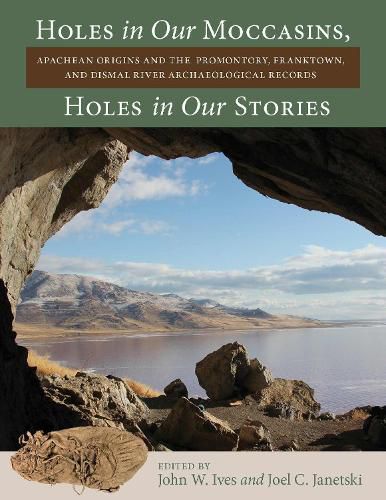Readings Newsletter
Become a Readings Member to make your shopping experience even easier.
Sign in or sign up for free!
You’re not far away from qualifying for FREE standard shipping within Australia
You’ve qualified for FREE standard shipping within Australia
The cart is loading…






From 1930 to 1931, Julian Steward recovered hundreds of well-worn moccasins, along with mittens, bison robe fragments, bows, arrows, pottery, bone and stone tools, cordage, gaming pieces, and abundant faunal remains, making Utah’s Promontory Caves site one of the most remarkable hunter-gatherer archaeological records in western North America. Although Steward recognized that the moccasins and other artifacts were characteristic of the Canadian Subarctic and northern Plains and not the Great Basin, his findings languished for decades.
This volume connects Steward’s work with results from new excavations in Promontory Caves 1 and 2 and illustrates that the early Promontory Phase resulted from an intrusive large-game hunting population very different from nearby late Fremont communities. Lingering for just one or two human generations, the cave occupants began to accept people as well as material and symbolic culture from surrounding thirteenth-century neighbors. Volume contributors employ a transdisciplinary approach to evaluate the possibility that the Promontory Phase materials reflect the presence of Apachean ancestors. In these records lies the seeds for the intensive Plains-Puebloan interactions of the centuries that followed.
$9.00 standard shipping within Australia
FREE standard shipping within Australia for orders over $100.00
Express & International shipping calculated at checkout
From 1930 to 1931, Julian Steward recovered hundreds of well-worn moccasins, along with mittens, bison robe fragments, bows, arrows, pottery, bone and stone tools, cordage, gaming pieces, and abundant faunal remains, making Utah’s Promontory Caves site one of the most remarkable hunter-gatherer archaeological records in western North America. Although Steward recognized that the moccasins and other artifacts were characteristic of the Canadian Subarctic and northern Plains and not the Great Basin, his findings languished for decades.
This volume connects Steward’s work with results from new excavations in Promontory Caves 1 and 2 and illustrates that the early Promontory Phase resulted from an intrusive large-game hunting population very different from nearby late Fremont communities. Lingering for just one or two human generations, the cave occupants began to accept people as well as material and symbolic culture from surrounding thirteenth-century neighbors. Volume contributors employ a transdisciplinary approach to evaluate the possibility that the Promontory Phase materials reflect the presence of Apachean ancestors. In these records lies the seeds for the intensive Plains-Puebloan interactions of the centuries that followed.